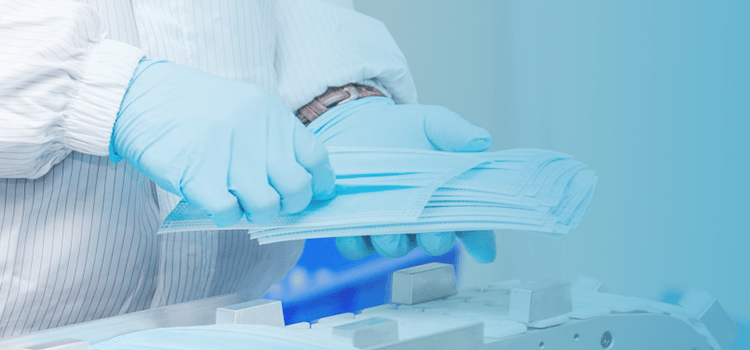


Views: 0 Author: Edmund Publish Time: 2024-02-29 Origin: Site









The ASTM F1670 and ASTM F1671 standards are critical benchmarks in assessing the barrier performance of materials used in protective clothing, including AAMI Level 4 surgical gowns. These tests are designed to evaluate the material's resistance to synthetic blood and blood-borne pathogens, ensuring the highest level of protection in high-risk medical settings. Let's delve into the specifics of each test and what it entails.
### ASTM F1670: Synthetic Blood Penetration Test
The ASTM F1670 test evaluates the ability of a material to resist the penetration of synthetic blood under constant contact. The synthetic blood used in this test simulates the viscosity, conductivity, and surface tension of human blood, providing a realistic challenge to the material's barrier properties. The test is conducted by applying a specified volume of synthetic blood to the material at a controlled pressure for a fixed duration. The pressure used in this test typically reflects the type of pressure a surgical gown might encounter during use, such as blood spurting or pooling.
#### Test Procedure:
1. **Preparation**: A sample of the gown material is placed in a test apparatus designed to simulate the contact and pressure conditions experienced in a surgical setting.
2. **Application**: Synthetic blood is applied to one side of the material, while the opposite side is observed for any sign of penetration.
3. **Pressure**: The test is conducted under conditions that mimic different levels of surgical blood exposure, with pressures ranging from 0 to 2 psi (0 to 13.79 kPa), reflecting various clinical scenarios.
4. **Evaluation**: After the test, the material is examined for evidence of synthetic blood penetration. A material that shows no sign of penetration under the conditions of the test is considered to have passed.
### ASTM F1671: Test Method for Resistance to Blood-Borne Pathogens
The ASTM F1671 test goes a step further by assessing a material's resistance to penetration by blood-borne pathogens. This test uses a bacteriophage (Phi-X174) as a surrogate virus, which is smaller than most viruses of medical interest, thereby providing a rigorous challenge to the protective barrier.
#### Test Procedure:
1. **Viral Preparation**: A Phi-X174 bacteriophage solution is prepared, simulating the presence of blood-borne pathogens in human blood.
2. **Application**: The viral solution is applied to the material under test conditions similar to those used in the ASTM F1670 test, including similar pressure and duration.
3. **Detection**: After exposure, the material is checked for the presence of the bacteriophage on the side opposite to the application. This involves collecting any fluid that has penetrated and testing it for the presence of the bacteriophage.
4. **Evaluation**: The test is considered passed if no bacteriophage is detected on the collection side of the material. This indicates that the material provides an effective barrier against blood-borne pathogens under the conditions of the test.
### Importance in AAMI Level 4 Gowns
For a surgical gown to meet AAMI Level 4 standards, it must successfully pass both ASTM F1670 and F1671 tests, demonstrating its capacity to protect against fluid and microbial penetration. This includes resistance to synthetic blood at high pressures and effective barrier properties against blood-borne pathogens, providing the highest level of protection required in high-risk surgical procedures or settings where exposure to such hazards is anticipated.
These tests are integral to the certification process for AAMI Level 4 surgical gowns, ensuring that healthcare professionals are equipped with the necessary protective apparel to safeguard against exposure to infectious fluids and blood-borne pathogens during medical procedures.
Short-Fiber Nonwoven Fabric: An Eco-Friendly, Soft, And Versatile Nonwoven Material
Optimizing Sterilization Practices with Self-Sealing Sterilization Pouches: A Comprehensive Guide
Unlocking The Benefits of PE SPA Liners: A Comprehensive Guide To Relaxation And Wellness
The Ultimate Guide To Nonwoven Fabric Shopping Bags: Embracing Sustainability in Every Purchase
The Ultimate Guide To Nonwoven Adult Diapers: Comfort, Dignity, And Freedom
Exploring The Versatile World of Nonwoven Fabrics: Types, Characteristics, And Applications
Discover The Perfect Boot Covers for Every Task: A Comprehensive Guide
The Ultimate Guide To Choosing The Perfect Shoe Covers for Every Need